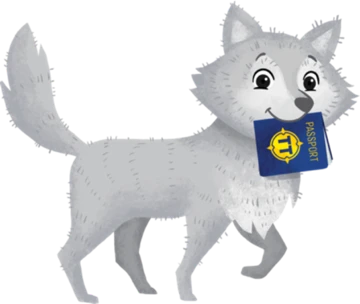What is a compass rose?
A compass rose is a drawing that is usually found on maps to show the cardinal directions, north, south, east, and west. Have you ever looked at a map and said, “the United States of America is above Mexico?”
But if you are in Mexico and looked up you wouldn’t see the United States. Instead, it is better for us to say that the United States of America is north of Mexico. The most northern point on our planet is the North Pole and the most southern point is the South Pole.
When facing north, east would be left in relation to where you are standing, and when facing north, west would be to the left.
Before you create your own compass rose style, check out the examples for some inspiration.










